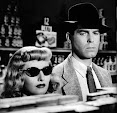The interesting question is whether there are multiple stable equilibrium points. What happens when a society goes outside the set of parameters that it was "designed" for? Advanced technology has radically changed our life -- do the Old Design Rules still work?I think that this warrants some further elaboration. It's my belief, and a cursory examination of history will confirm, that it is possible to have different type of societies (i.e equilibrium points) but only only within certain limits. The whole point about the "Tao of Life" is that there is more commonality amongst enduring societies than than there are differences.
I suppose the reason why there is limited range of equilibrium points within a human societal "system" is because the material from which human society is built, human nature, puts constraints on types of societal structures that can be maintained. Human capabilities with regard to jealousy, trust, fear, love, friendship, etc. are the limiting factors with regard to human interaction. Human nature is the material from which societal "engines" are formed, and this in turn places limits on the type of enduring societies that are possible.
An example of this is with regard to sexuality. Most men naturally desire variety and it would be expected, that given this nature, societies would develop which would cater to this fact. Yet it's pretty obvious that culturaly advanced polyamorous societies have failed to develop, since sexual activity occurs in the context of other parameters such as reproduction, love and investment. Any society that attempted to institute such a practice would be torn apart by feuds, lusts, jealousy etc. Likewise, Communism, a great idea in theory, fails because it ignores the fact the human nature responds to incentives.
Human nature, being what it is, therefore limits the type of advanced societies that can exist.
What we do tend to see is that amongst primitive peoples there does seem to be more latitude with respect to human nature and stable "society", but as a society becomes bigger and culturally advances, the potential for alternative normative behaviors lessens.

